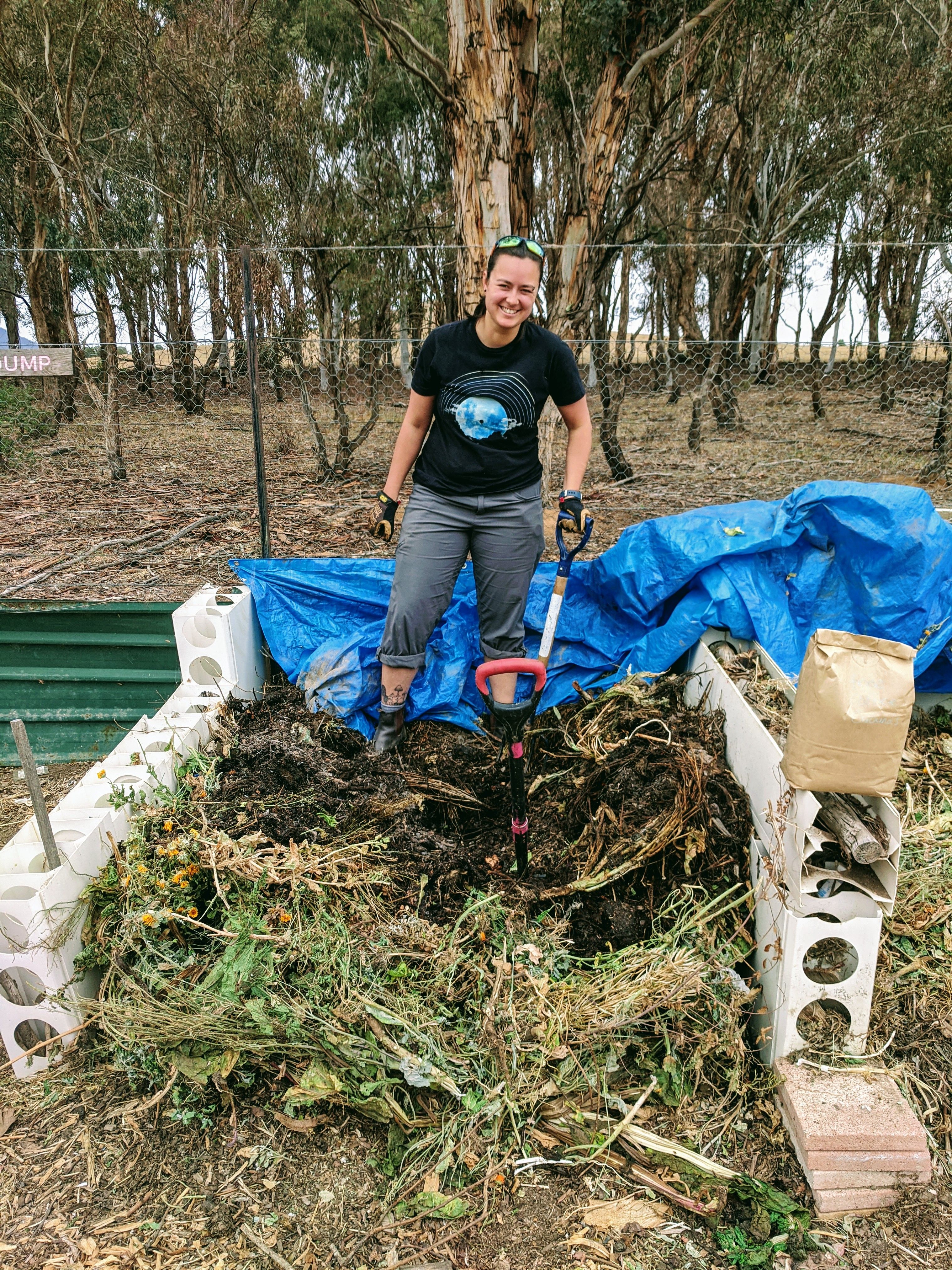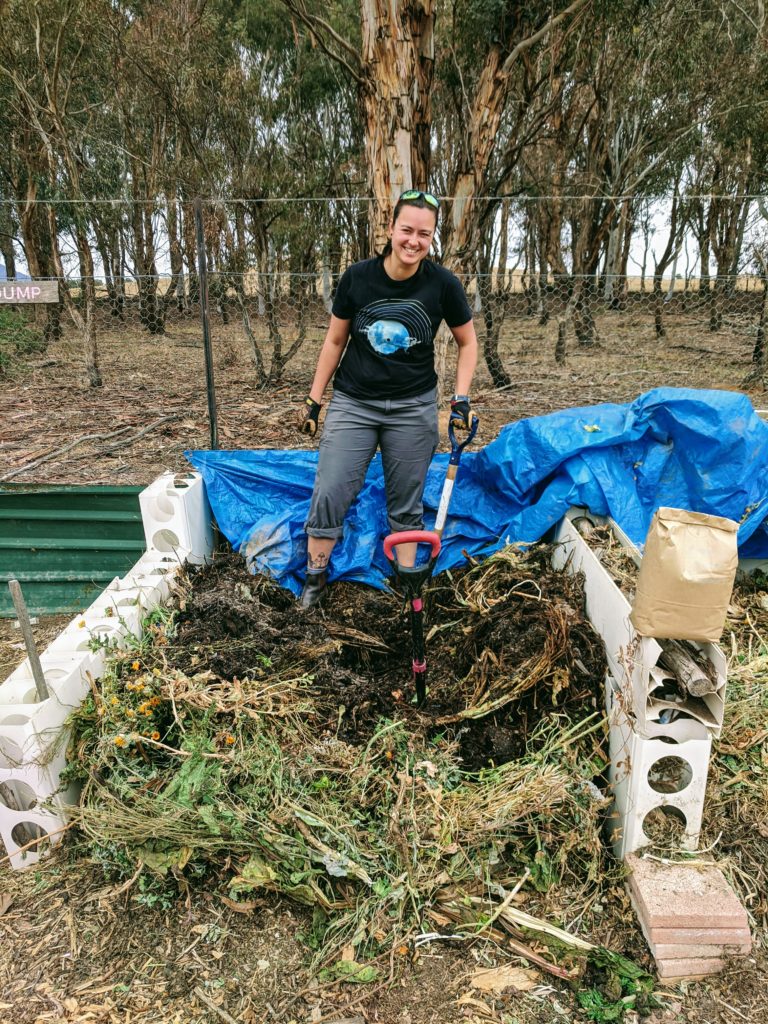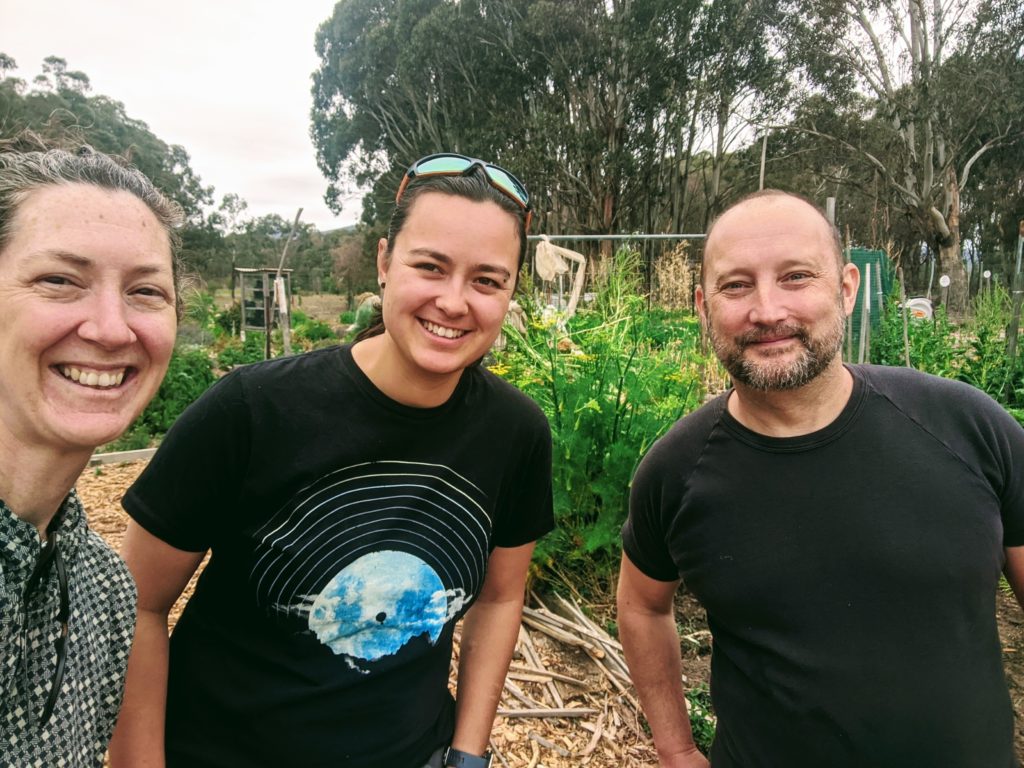
Great compost opportunities at Mitchell Community garden
Last Sunday I stopped by the Mitchell community garden for the first time. I’ve known that one exists in Mitchell for yonks but I had a hard time picturing what it might look like. What with Mitchell being one of the semi-industrial areas of Canberra, with lots of establishments squished in to a smallish area, I wondered where a garden could be hiding?

To my surprise the Mitchell garden is no small oasis! Located sort of out the back from the new light rail depot it’s a generous space, with generous plots for growing lots of green goodies. And better yet, there are large areas dedicated to composting 😊. The team have clearly been making some good compost, as evidenced by a bay that had just been cleared. But when I met with Jay and Steve we all agreed that it would be great to do much more with the space and some of the resources already available.

Any community garden will be producing plenty of green waste, in the form of excess stalks, leafy bits and things that have gone to seed. This material is normally what ends up forming the bulk of the compost in any community garden. One problem with just piling up stalky long things is that they compost slowly because they’re tough and in large pieces. Another problem is that they make it much more difficult to turn the heap! Turning any compost heap will generally hasten the process (yes, I can admit that there is such a thing as too much turning). But if you’re used to turning a compost heap composed mainly of green waste then you’ll know how back-breaking that can be. All the stalks and branches mesh together, it’s just like reinforcing concrete with steel rebar!


Luckily the Mitchell garden is well equipped with a pretty hefty looking chipper/shredder. Jay just needs to get an experienced member to show her how to use it safely. Then the rate of composting will increase for sure! This will also enable them to use up a stockpile of browns (twiggy stuff) so that they can keep an eye on and adjust the carbon to nitrogen ratio. And as long as you’ve got enough browns (carbon rich stuff) then you can start to process the best compost feedstock, food waste! The Mitchell garden have a drop off point for food waste and they would like to see more coming in. So if you’re a Gungahlin resident this is a great opportunity to put your kitchen scraps to good use.

If the community garden can arrange for regular food waste deliveries then it can start using what I like to call the ‘hot jam donut’ method of composting. This is where things start getting fun! (and hot). The great thing about food scraps is that they have a bit of carbon (of course), a bit of nitrogen (but not too much) and a whole lot of water. Those are three of the main ingredients for composting, the other being oxygen, and that one comes fairly freely*. If you have a nice big compost heap (doesn’t have to be 1 cubic metre, as proven by the 80sqcm bays at HCC headquarters) and plenty of food scraps then you can start building your hot jam donut. The trick is that you need compost, or semi-compost to form the ‘dough’. Using a nice thick layer of this on all sides, with food scraps in the middle as the ‘jam’, it will proceed to cook itself. I’ll write a complete blog post outlining all of the efficiencies and tips for this method some time. For now it’s enough to say that with the right materials (i.e. no stalky bits!) you can use this method to rapidly produce great compost, at the same time combatting issues of pests and odours (the spongy semi-compost layer keeps the former out and the latter in).

Seeing as the Mitchell garden is so large there is a continual need for more compost input so it would be really great to hook up the garden with a continual supply of food waste. If anyone is willing to regularly transport food waste to the garden then I can put you in touch with Jay and others who are keen to process it. Right now the HCC is still only servicing inner North suburbs in terms of micro-hauling of food scraps. Mitchell is just that little bit out of reach. But if more people get involved with the HCC then we can extend our reach and feed this lovely garden 🙂 So don’t forget to tell all your friends about the HCC, and how we’re helping to mitigate climate change.

*Of course if you really want to speed things up you need to keep feeding oxygen into the heap and the best way to do this is still by using good ol’ manual labour. It’s not completely free as compost volunteers are worth their weight in gold!
